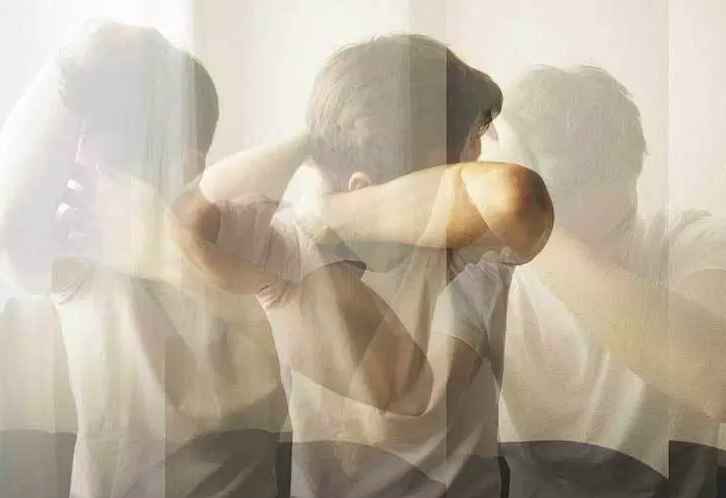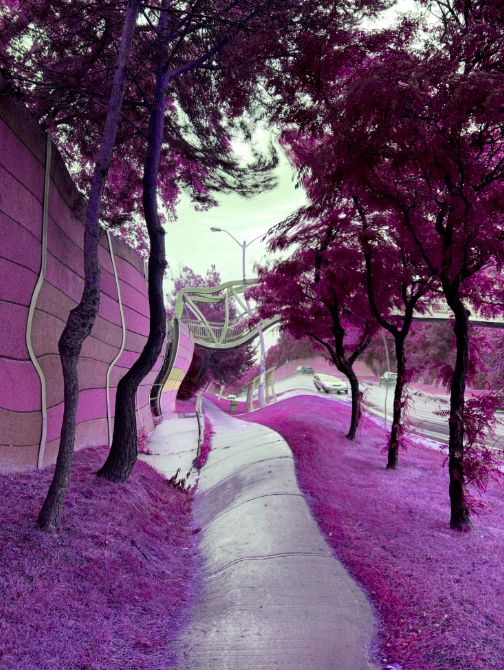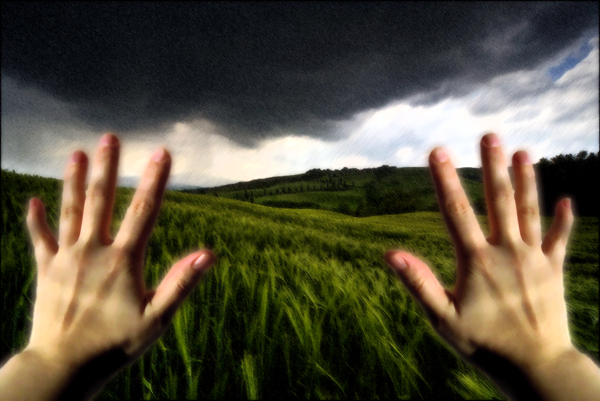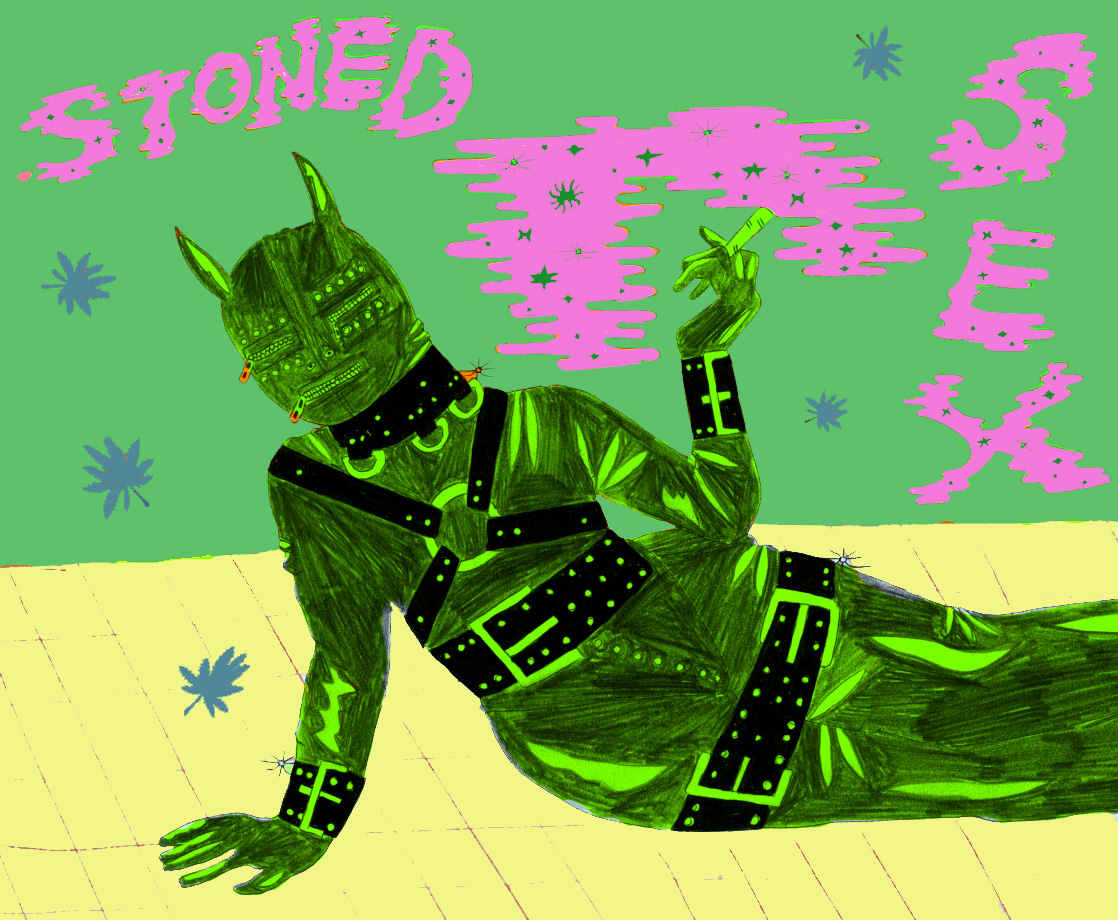Psychedelics are experiencing a resurgence for both fun and deep healing. But there’s a lesser-known and highly contested shadow lurking in the corner of the psychedelic community’s conscience. It’s called Hallucinogen Persisting Perception Disorder, or HPPD.
When an expert first brought it up to me, I thought it was a myth spun by the War on Drugs. But the more I dug into it, and the more folks I spoke to who were sure they had it, I realized it wasn’t something to be ignored — no matter how enthusiastic I am about psychedelics. It’s extremely rare, however, only affecting somewhere between 0.12 to 4.2 percent of psychedelic users. But if you’re someone who consumes psychedelics, it’s important to know about all the potential benefits and repercussions that come with using these powerful substances.
So, what is HPPD, exactly? It’s hard to explain because its effects are different for everyone. But one thing is certain: it’s not a “flashback” nor is it “permatripping,” both of which indicate the feeling of tripping again after coming down. HPPD, on the other hand, is a condition characterized by lasting visual distortions, such as visual snow, trails, auras, and seeing things move in the corner of your eye; and in some cases, experiencing corresponding depression, anxiety, and depersonalization/derealization in the weeks, months, and even years after a psychedelic trip has ended. In other words, HPPD is purely visual and doesn’t induce any of the physical, mental, emotional, or spiritual euphoria associated with taking psychedelics.
“I get visual trails on hands, people running, cars. Flat surfaces will sometimes look like they have a moving pattern on them,” is how one anonymous HPPD sufferer describes it. “Letters are sometimes surrounded by an aura which makes it hard to read. When I look at an object and then look away, I may see an afterimage of its contour. In the dark, I can see visual snow moving,” a 38-year-old with HPPD tells MERRY JANE.
Gallery — You Can Trip Without Taking Drugs:
While the visual distortions can be distressing, the depersonalization/derealization seems to hit folks with HPPD the hardest. “I often feel as though I am not ‘myself,’ just watching what I am doing through my eyes. It feels as though I have no control over what I do,” an 18-year-old explains. “I’m pretty much anxious all the time now, constantly on edge and unable to focus on anything. Sometimes I’ll be so anxious that I’ll completely dissociate and not acknowledge the outward world,” an anonymous young woman said.
HPPD was first noted in scientific literature in 1954, and during the first wave of psychedelic research was referred to as “flashbacks.” But of the 25 people MERRY JANE corresponded with reporting this story, most said they’ve never experienced a flashback, and were annoyed by the misrepresentation of their condition as an “endless” or “free trip.”
While HPPD was first introduced in the Diagnostic and Statistical Manual of Mental Disorders III (DSM-III) as “Post-Hallucinogen Perception Disorder” in 1987, it wasn’t until 2000 that it was established as a full syndrome. Now, HPPD is in the DSM-V, clinically defined as re-experiencing perceptual symptoms that occurred during a “hallucinogenic” drug experience, which cause “clinically significant distress or impairment in social, occupational, or other important areas of functioning.” But, the DSM’s final criteria — that these symptoms are not due to another medical condition or mental health disorder — is where this gets very gray and complicated.
That’s because some experts believe that everyone who develops HPPD had pre-existing conditions, like visual distortions and dissociative episodes, even before taking a psychedelic substance. For example, Torsten Passie, a long-time psychedelic researcher recently said as much on the Psychedelics Today podcast. “What we have done is we really examined these people which claim they have this phenomena,” Passie said referencing a 2018 study he co-authored. “And what we have found is they have a certain psychopathology… They are prone to anxiety, they have dissociative tendencies, and virtually all of them had these visual phenomena before they took hallucinogenics. And so, therefore, you don’t really know what caused it, right?”
MERRY JANE reached out to Passie for the full text of the paper he’s speaking of, as well as to ask him some questions about HPPD, but he didn’t respond for comment.

When I spoke with folks who have HPPD on whether they had pre-existing visual disturbances, anxiety, depression, or dissociation before they took psychedelics, it was a mixed bag of answers. They were a few no’s; they didn’t have any symptoms prior to psychedelics use. But there were also a variety of yes’s: from folks who were just slightly prone to depression and anxiety before their psychedelic experience, to others who had experienced depersonalization or visual snow previously, but tripping made it a lot worse.
In the psychedelic community, we talk a lot about how people with pre-existing or a family history of mental health conditions need to be extra careful with psychedelics — or maybe not use them at all — in order to avoid aggravating their condition. It’s most often in reference to people with schizophrenia, bipolar 1, or other psychosis spectrum disorders. The reason is because it’s often believed that psychedelics can push these people over the edge into a longer lasting psychotic or manic episode when there may not have been one otherwise. It’s highly disputed in the community; some believe psychedelics taken in a safe and sacred environment with adequate follow-up care and therapy can help these people.
But, what if developing HPPD is a whole other risk involved with taking psychedelics for folks who struggle with mental health?
James Giordano, professor of neurology and biochemistry at Georgetown University Medical Center, said it’s been speculated that folks with a history or family history of “depression, certain anxiety states, and who are on the psychotic spectrum” may be genetically pre-disposed to developing HPPD. This may explain why there’s a small fraction of people who get it after just one psychedelic, empathogen, cannabis, or synthetic cannabis experience.
Giordano said the biggest risk factor, though, is frequency of drug use. “If someone uses a drug 12 times a year, their risk of HPPD is going to be low,” Giordano gave as an example. “But if someone uses a drug 12 times over two weeks, they’re putting themselves at much greater risk.”

This is why it used to be believed LSD was more likely to spark HPPD, but now doctors like Nikola Djordjevic, Medical Advisor at Loud Cloud Health, said it’s probably that people are just using LSD more frequently than other psychedelics. According to a 2014 review, most psychedelics have been associated with HPPD, including mushrooms, cannabis, mescaline, MDMA, ayahausca, ibogaine, ketamine, salvia divinorum, 5-MeO-DiPT, and PCP.
Giordano also said that dose and mixing substances – especially cannabis with psychedelics – can also contribute to a person’s risk of getting HPPD, which Djordjevic confirmed. Djordjevic also added that even mixing alcohol with psychedelics could be risky. “Since it’s also a depressant, this effect can multiply exponentially during a psychedelic experience, increasing the chance of developing HPPD.”
When I asked the folks with HPPD who reached out to me for this piece, many — but not all — said “yes” they were mixing substances, especially psychedelics with cannabis, but often adding alcohol and other drugs, like MDMA, Xanax, amphetamines, Ketamine, or cocaine, among others. Some folks also reported mixing psychedelics or taking a drug thinking it was one thing, and it turned out to be something else.

It’s also been speculated that HPPD is caused by a “bad trip” or a traumatizing psychedelic experience because the symptoms can be reminiscent of Post-Traumatic Stress Disorder (PTSD). Stanislav Grof, one of the most prolific psychedelic therapists and creator of Holotropic Breathwork, writes about people with lasting “anomalies in color perception, blurred vision, after-images, spontaneous imagery, alteration in body image, intensification of hearing, ringing in the ears, or various strange feelings” in his seminal 1978 book, LSD Psychotherapy. He theorizes that these symptoms are a result of “unresolved” psychedelic therapy sessions, and that they usually “disappear instantly” once the “underlying [unconscious] material is fully experienced and integrated.”
However, while talking to people, the majority of them said no, they didn’t get HPPD after a bad trip. Many even explained they prepared their “set and setting” and did psychedelics with a trip sitter or shaman (both staples of responsible use). Yet, some research points to ceremonial psychedelic consumption as making folks less vulnerable to the condition, or at least within indigenous communities. For example, a 2005 study surveyed members of the Native American Church who use peyote sacramentally. The researchers found that of the 80 people who had taken peyote ritually over 100 times, none had symptoms resembling HPPD.
Similarly, the condition is rarely seen in the highly controlled and supportive environments of current clinical trials with psychedelic-assisted therapy. “The Heffter Institute, Hopkins, and I suspect other sites like NYU, have taken the concerns about possible HPPD very seriously,” said Bill Richards, a psychologist at Johns Hopkins who has led hundreds of psychedelic-assisted therapy sessions with psilocybin — now and in the 1970s before research was shut down. He also said that researchers complete a form after every psilocybin session and a follow-up interview that enquires about HPPD.
“I personally have encountered no reports of HPPD,” Richards added. “Of course this is with pure psilocybin (synthesized) in reasonable dosage without any other substances in medically screened volunteers.”
Richards believes HPPD may have more to do with mixing multiple substances, or general unknown purity and dosage in non-clinical psychedelics use. “Eventually we will publish a report on our findings from the use of psilocybin in research contexts.”

Is There Anything People with HPPD Can Do?
While finding a doctor that knows what HPPD is and who won’t stigmatize you for using drugs may be hard, there are some case studies of medications that can help relieve visual and mental symptoms. Lamictal and Klonopin are most often perscribed to those with HPPD, but also clonidine, SSRIs (although, they can make it worse for some), and other anti-psychotic or anti-epileptic/mood stabilizing drugs are used, too.
But this perception disorder isn’t a life sentence for everyone, however. For a large portion of people, HPPD seems to go away over time. That said, there have been cases of it lasting for years — decades even.
Most folks find some lifestyle adjustments, like ceasing psychedelic and cannabis use (sometimes even alcohol and caffeine, too) helps, as can a healthy diet, regular exercise, and getting enough sleep. But the most common thing that seems to help people is an acceptance of the condition, or at least being mindful not to dwell on it.
“Do we suffer from HPPD, or do we suffer from the idea that it can’t be cured?” asked one 40-year-old who spoke with MERRY JANE anonymously. If HPPD sufferers ruminate less and instead try to accept and adjust, they often find themselves experiencing a lot less stress and depression, and sometimes even less visual symptoms.

However, “learning to live with it” is next to impossible for some, especially when their symptoms include mental fog which can hinder their performance in everyday life. In online support groups, people describe their visual symptoms coming on strongly at extremely inconvenient, high-stress moments, like during job interviews or while driving at night. The worst of it seems to be the depression and depersonalization, which can make some suicidal. “It’s a living hell,” lamented one 28-year-old who’s had the condition for over 10 years.
Despite all of this, the point of this story isn’t to stigmatize psychedelics. In fact, there are studies that show lifetime psychedelic users outside of clinical trials are less depressed and suicidal when compared to users of other drugs. But HPPD is another reason to carefully consider your substance use, especially with psychedelics, and to proceed responsibly and with respect for their sacred strength. It’s also another reason to always test your drugs for purity before taking them, and to really consider if it’s worth mixing substances. When planning your safest possible trip, weighing the risks of HPPD should definitely be a part of the conversation.











